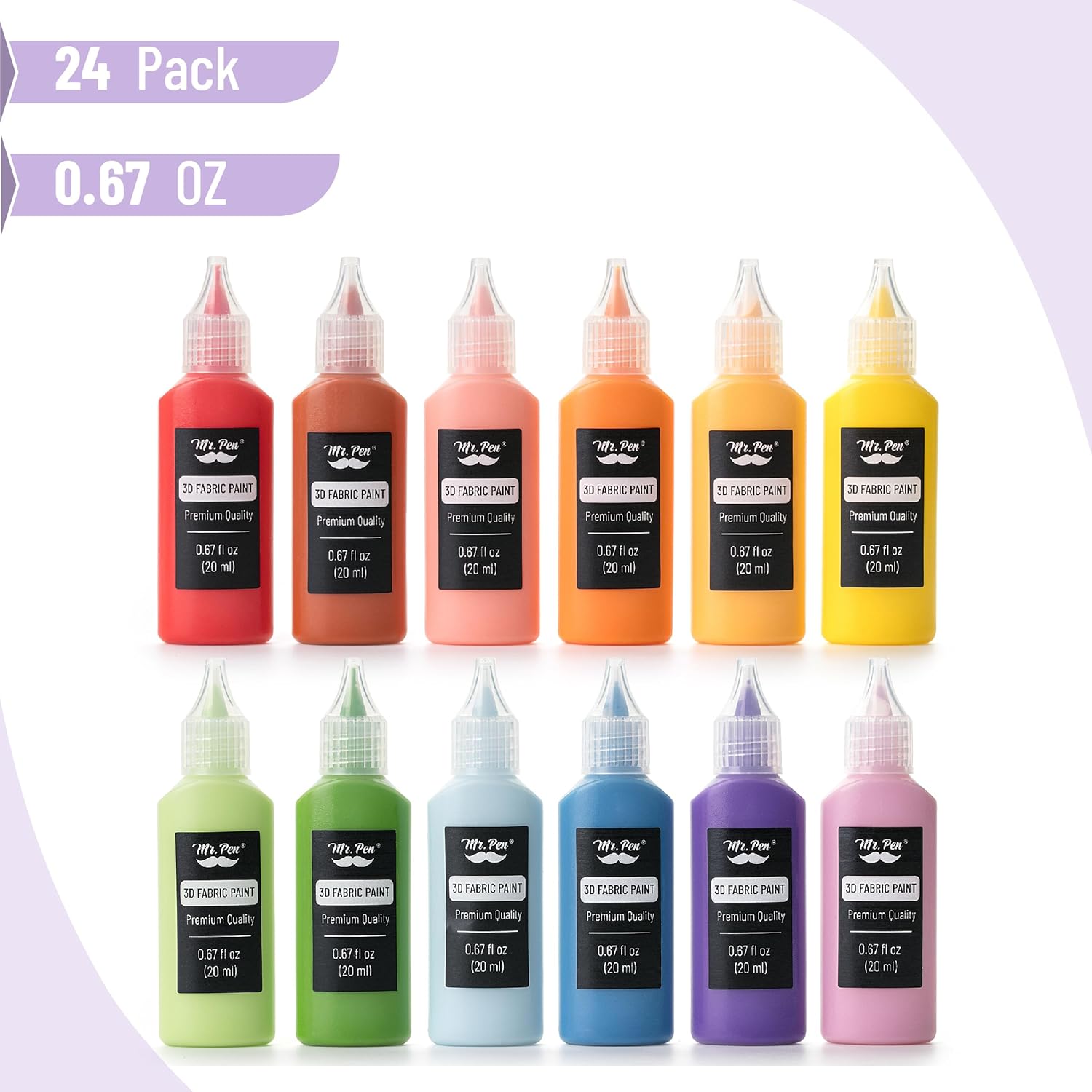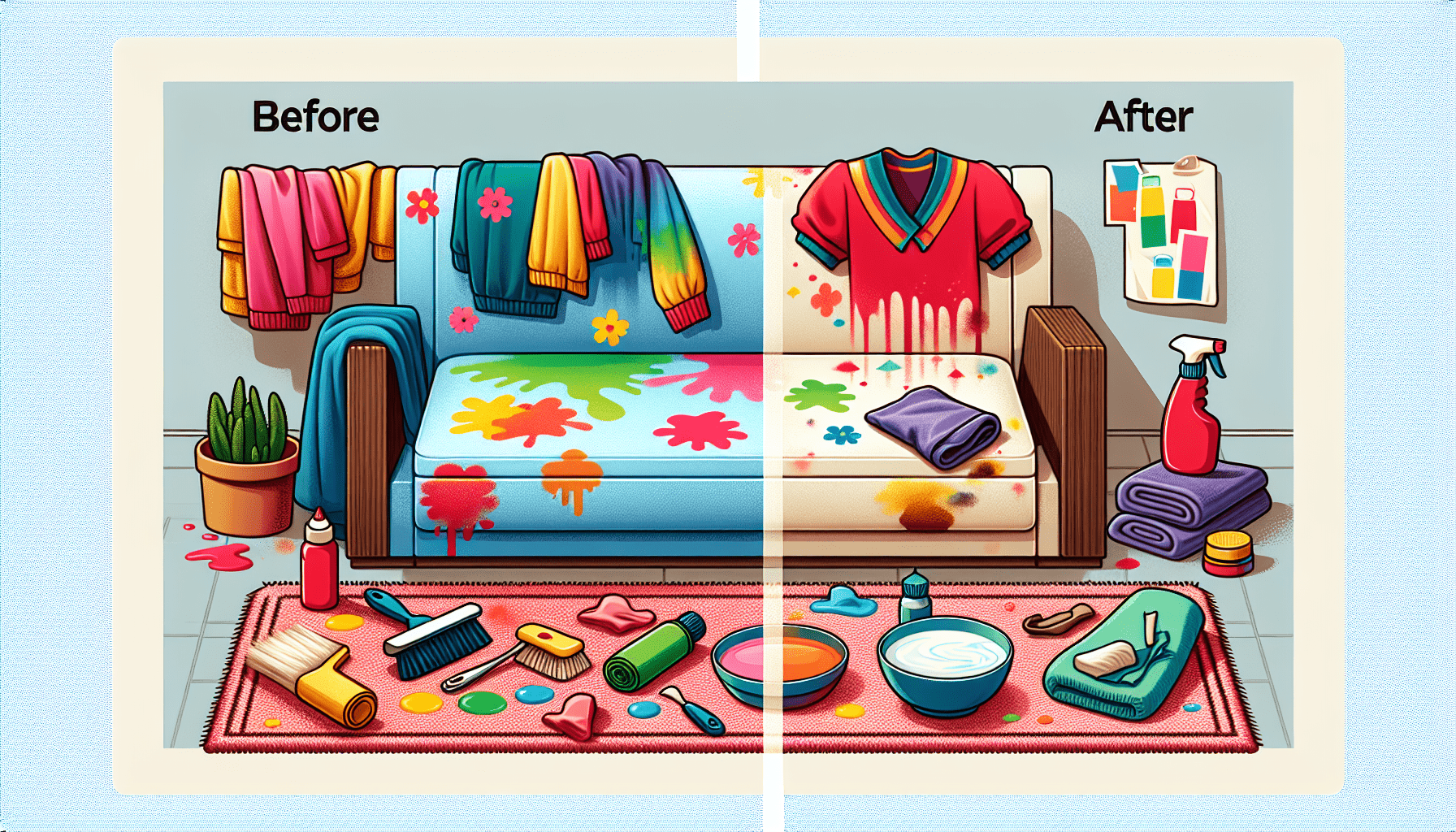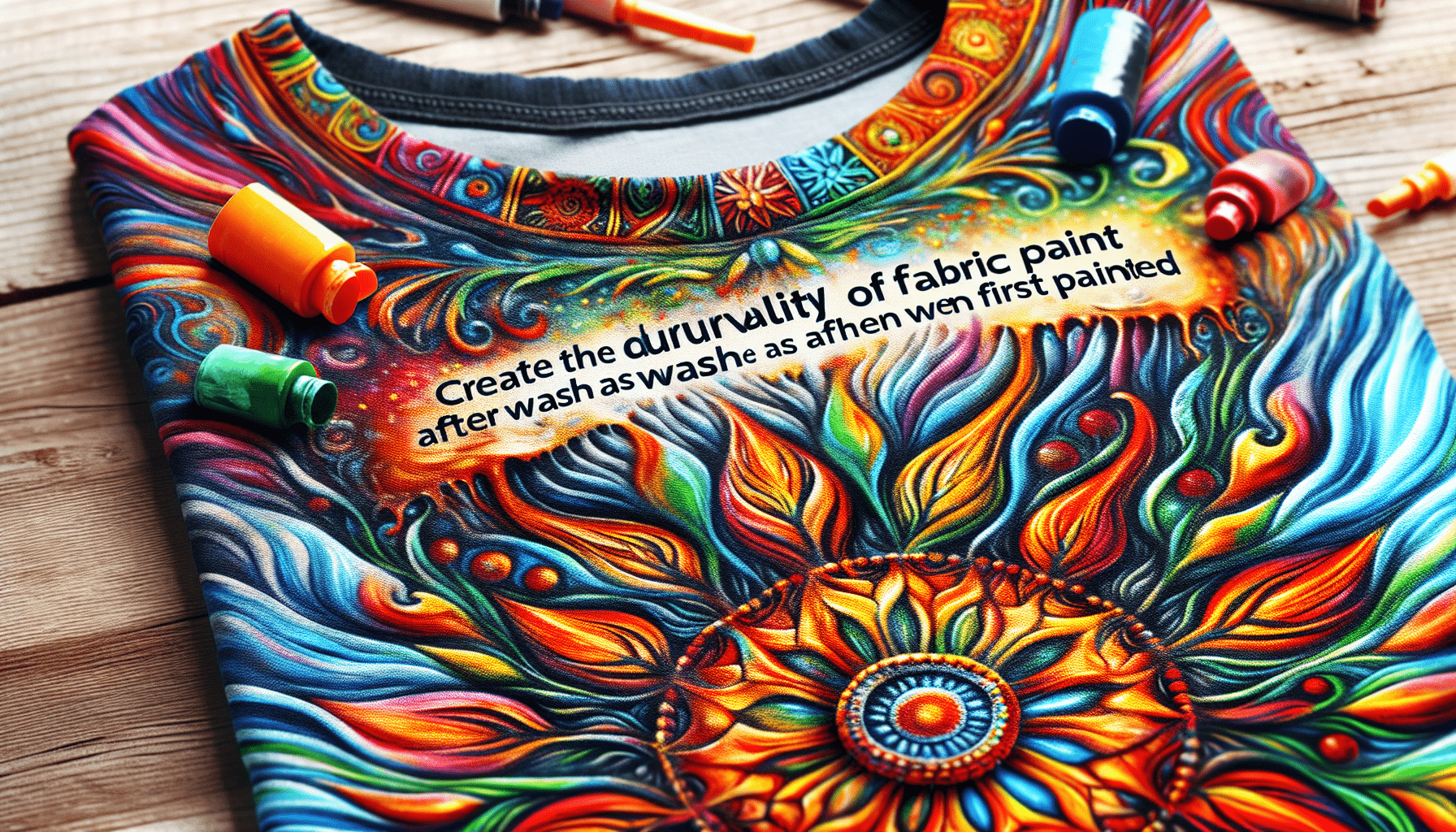In this article, you will learn the meticulous process of effectively sealing fabric paint. Whether you are a seasoned artist or a newcomer to this creative endeavor, mastering the technique of sealing fabric paint is essential for ensuring the longevity and vibrancy of your artwork. By following these step-by-step instructions, you will acquire the necessary knowledge to preserve your painted fabric pieces with a professional touch, allowing them to withstand the test of time and frequent use.
Choosing the right sealant
When it comes to sealing fabric paint, it is crucial to choose the right sealant that suits your fabric type. Different fabrics require different sealants to ensure optimal results. Take into consideration the type of fabric you are working with, such as cotton, silk, or polyester, as this will determine the compatibility and effectiveness of the sealant. Some sealants may be suitable for multiple fabric types, while others may be specifically designed for a particular fabric. Researching and understanding the fabric type is the first step in choosing the right sealant.
Research different sealant options
Once you have identified the fabric type, it’s time to research and gather information about different sealant options available in the market. Look for sealants that are specifically designed for fabric painting and have good reviews and recommendations from other users. Some popular sealant options include sprays, liquid sealants, or heat-set sealants. Each option may have its own advantages and disadvantages, so it’s essential to weigh these factors based on your specific needs and preferences. By conducting thorough research, you can make an informed decision about which sealant will work best for you.

Read product reviews and recommendations
Before making a final decision, it is highly recommended to read product reviews and recommendations from other artists or users who have previously used the sealant you are considering. These reviews can provide valuable insights into the effectiveness, ease of use, and durability of the sealant. Look for reviews that mention the specific fabric type you are working with to gauge how well the sealant performs on similar fabrics. Additionally, seek recommendations from experienced artists or professionals in the field who can offer valuable advice based on their expertise. Taking the time to read reviews and recommendations can help you make a well-informed choice and avoid potential disappointment.
Prepping the fabric
Prepping the fabric before applying the sealant is an important step to ensure optimal results and longevity. Start by thoroughly washing and drying the fabric to remove any dirt, residues, or sizing agents that may interfere with the sealant’s adhesion. If necessary, iron the fabric to eliminate any wrinkles or creases that could impact the sealant’s smooth application. Be sure to iron according to the fabric’s care instructions to avoid damaging or distorting the fabric. Finally, take the time to remove any loose threads or debris from the fabric, as these can affect the final appearance and durability of the sealed fabric.

Testing the sealant
Before applying the sealant directly to the fabric, it’s crucial to perform a spot test to ensure compatibility and assess the desired results. Choose an inconspicuous area of the fabric and apply a small amount of the sealant according to the manufacturer’s instructions. Allow sufficient time for the sealant to dry and observe any changes in color, fading, bleeding, or changes in the fabric’s feel and flexibility. This spot test will help you gauge the sealant’s compatibility with the fabric and make any necessary adjustments or considerations before proceeding with the entire project.
Applying the sealant
Choosing an appropriate applicator is key to achieving even and smooth coverage when applying the sealant. Depending on the sealant type, options may include brushes, sponges, or sprays. Consider the nature of your fabric and the desired finish when selecting an applicator. When applying the sealant, it’s crucial to do so in thin layers, as applying too much sealant can result in an uneven or stiff finish. Allow sufficient drying time between each layer to ensure proper adhesion and avoid any potential smudging or smearing of the fabric paint.
Heat setting
heat setting is a crucial step for certain types of sealants, such as heat-set sealants. Consider using an iron or a heat press to activate and set the sealant on the fabric. Before proceeding, carefully read and follow the manufacturer’s instructions regarding the heat setting process. Ensure that you have even coverage of the sealant on the fabric and apply heat for the recommended duration. Heat setting aids in enhancing the seal’s durability, preventing the sealant from washing off or fading over time. Proper heat setting can significantly contribute to the longevity of the sealed fabric.
Avoiding common mistakes
To achieve the best results when sealing fabric paint, it’s important to avoid common mistakes that can compromise the overall outcome. One common mistake is applying too much sealant, which can result in a stiff or uneven finish. It’s important to follow the instructions provided by the manufacturer regarding the recommended amount of sealant for your specific fabric type. Another mistake to avoid is not following the instructions provided with the sealant, as each product may have its own unique application and drying requirements. Lastly, it is crucial not to ignore the fabric care recommendations once the fabric has been sealed. Proper care and maintenance can ensure the longevity and vibrancy of the sealed fabric.
Curing and curing time
Understanding the concept of curing is essential when it comes to sealing fabric paint. Curing refers to the process of allowing the sealant to fully dry and set onto the fabric, ensuring maximum adhesion and durability. Different sealants may require varying curing times, so it’s crucial to check the manufacturer’s instructions for the recommended duration. Creating an optimal curing environment, such as maintaining the recommended temperature and humidity, can significantly enhance the effectiveness of the sealant. By allowing sufficient curing time, you can ensure that the sealant has fully bonded with the fabric, maximizing its longevity.
Caring for sealed fabric
After sealing the fabric, it’s important to follow specific care instructions to preserve the integrity of the sealant and the fabric itself. Depending on the fabric type and the sealant used, specific care instructions may vary. Follow the manufacturer’s recommendations for hand washing or machine washing on a gentle cycle to avoid damaging the sealed fabric. Additionally, it’s important to avoid using harsh detergents or bleach that may deteriorate the sealant or cause color fading. By following proper care instructions, you can extend the life of the sealed fabric and maintain its vibrant appearance.
Testing the seal
Regularly testing the seal on the fabric is essential to evaluate its water resistance and durability over time. Check for water resistance by sprinkling a few drops of water on the fabric’s surface and observing if they bead up or are absorbed by the fabric. This test will indicate the effectiveness of the sealant in repelling liquids and protecting the fabric underneath. Assessing the durability of the sealant through wear and washing is also vital. Observe if the sealant withstands regular use and washing without significant fading or cracking. If the sealant shows signs of deterioration, consider reapplying the sealant to maintain its protective properties.
Add a personal touch
Once you have mastered the art of sealing fabric paint, it’s time to unleash your creativity and add a personal touch to your projects. Experiment with additional embellishments such as rhinestones, sequins, or embroidery to enhance the overall design. Try different sealant techniques, such as stenciling or masking, to create unique and intricate patterns. The sealant can act as a protective layer, allowing you to play with various artistic techniques and ensure the longevity of your creations. Let your imagination run wild and create one-of-a-kind designs that reflect your personal style and artistic vision.



